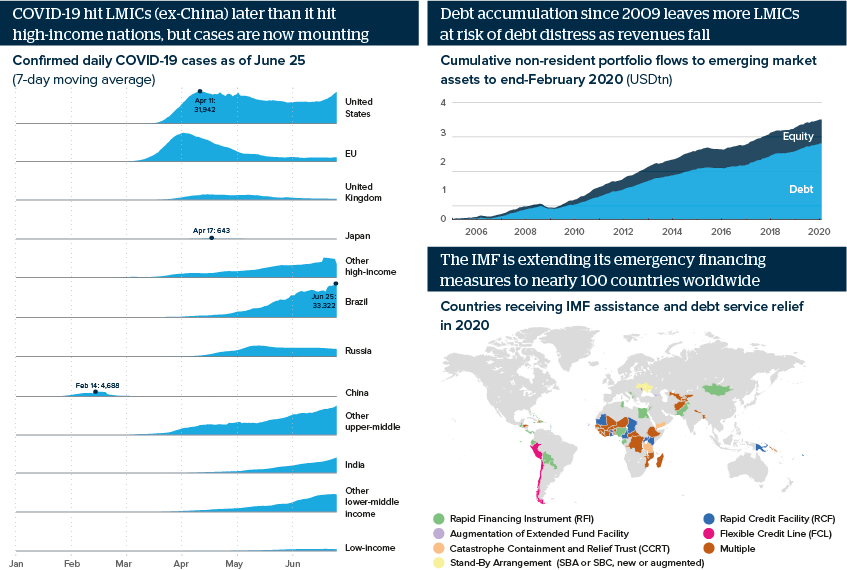COVID-19 spread halts developing nations' GDP catch-up
Amid fears of another COVID-19 wave in high-income nations, developing nations are struggling to control the first wave
Source: European Centre for Disease Prevention and Control, World Bank, Oxford Analytica
Outlook
Low- and middle-income countries (LMICs) will struggle to control COVID-19. Household size and informal working tends to be greater than in high-income nations, facilitating transmission, while healthcare capacity is weaker.
LMICs can ill-afford to copy richer nations’ non-pharmaceutical interventions to control the disease. They are suffering from lower revenues for fuel exports, tourism and remittances and facing higher external debt repayments due to currency weakness.
Some LMICs might achieve wider immunity by default. Yet surging infections will likely prompt high-income states to cut travel links, harming tourism and outsourcing businesses in LMICs, and lowering their GDP growth for decades to come.
Impacts
- High-income states can issue local currency debt at home and externally; this is much trickier and riskier for LMICs.
- Tourism revenue and overseas remittances will plunge, crimping the many LMICs that rely on these flows as a key engine of GDP growth.
- Close to 40 LMICs are in or near debt distress; further debt relief is needed but could be challenging to achieve.
- LMICs may need more funds; the IMF quota boost due in 2023 is uncertain, but the Fund can raise resources sooner by borrowing bilaterally.
See also
- Prospects for the global economy to end-2020 - Jun 30, 2020
- More developing countries will face debt distress - Jun 11, 2020
- More graphic analysis
